(Part 1 of 2)
now brings you the actual, all-inclusive history of Rock'n'Soul music, with Music Players.
▶ Music Player Checklist
GIRL GROUPS: 1960s
Hear the unlimited Playlist here.)
This Music Player covers the initial rise of GIRL GROUP vocal sounds from its origins in the '50s through its global range in the 1960s, in chronological order.
> Part 2:
SHE'S A REBEL: Decades Of Songs Influenced By The GIRL GROUPS
Girls grouped
"Girl Groups" often means girls grouped together because they are girls. It's nice for alliteration but not illumination.
It's too often a quiet dismissal, trivializing 'female pop' as teenage trash, disposable in critics' minds by comparison to the British Invasion or Garage Rock. But in truth those musics wouldn't exist like they do without this music. And the girls grouped were really a vast range of vocal stylings, genre sounds, age groups, and national origins. It's high time to commend that range and how crucial it has been to the evolution of Rock.
Here, we'll use the term Girl Group as an appreciation of a general sonic movement and how female artists shone within it. This is to dismiss the misuse of the term, which treats them as little girls not Rock enough for the boys club, or as sexy dolls fronting machine pop. And this is to disrupt the shopworn cartoon narrative that continually strobes that limited view into the mainstream, instead replacing it with a clarified respect for these equally valuable sonic pioneers.
(The far-more expansive history of WOMEN OF ROCK, with Music Players, will be posted separately.)
Beside every man there's a woman doing the same things. She just always gets less credit or pay. Remember, the Blues first burned bright on international turntables because of the breakthrough success of Bessie Smith. Women then belted out Swing, herded the Honky Tonks, and were rockin' fillies like the rockabillies. During those times of constrictive attitudes, record producers treated their works like novelty records while raking in the money it brought them. Because women were often less-recorded, it makes their presence and impact seem spotty in the early years of Rock'n'Roll. (Lack of representation ensures lack of recognition). But they were there, always. As that first wave of rockers fell apart from bad luck, treachery, and dumb moves, the early '60s was an open playing field.> In that gulf the women finally got some attention. The age of the Girl Groups took full bloom, flourishing like a hothouse.
First, think about the age range of this material. There were handclap pop songs for early teeners at pajama parties; there were romance dreams for the prom girls; there were more wary and intimate songs for the young college women; and there were adult songs, declarative of identity or experience. This was real coming-of-age music for the biggest generation of females the world had ever seen.
(But heart music is heart music, which is why it inspired everyone from The Beatles to Blondie, from The New York Dolls to La Luz, for decades to come.)
Secondly, it wasn't simply bouffant belles relayed in quartets cheerleading for marital bliss. Within this general vocal pop tradition, there were the soulful shoo-wop sisters, the dreamscape girls, the drama divas, the biker chicks, the party poppers, the dance dolls, the brassy Brits, the soulstress soloists, and -completely neglected by history- the girls from the garage. Along the way (as heard on the Music Player) you could enjoy bossa novas, country soul, rockabilly, surf, Beat Girls, folk, and psychedelia. Being that women make up over half of the world, the pop scope was international, with diverse scenes in the UK, France, Italy, Singapore, Mexico, and more.
Also, this wasn't all social engineering from male popsmiths in the Brill building. True, the key positions of the era were held by men; record execs, label owners, managers, most writers and producers, club owners, DJs. But women first began making huge inroads into the industry precisely because of this music. Carole King, Cynthia Weil, and Ellie Greenwich each wrote as many hit classics as practically anyone combined.
Let's not forget Motown writers Valerie Simpson, Pam Sawyer, or Sylvia Moy (who also produced many hits). Syreeta Wright started as receptionist at Motown, then co-wrote many of Stevie's hits, and broke through with hits of her own. Chris Clark seemed an unlikely Motown star, being a six-foot blond, but she went from being receptionist to the immortal "Love's Gone Bad", to an Oscar for co-writing the LADY SINGS THE BLUES film, to being a Motown vice president for video. In the current century, it became fact that women outsold men in every genre they performed in. This is the latest legacy of the doors the ladies kicked opened with this music. In heels, no less!
Separating sound by ideas of race never works, so the same applies to gender.> It takes everybody to make every thing. Just as varied complexions from myriad cultural traditions helped co-create Soul music, so men from every outlook collaborated with their sisters to create these songs.
Certain ones had an indelible effect. The perilous Phil Spector used his 'wall of sound' to surround his wife Ronnie's group, The Ronettes, in epic anthems to love consummated or lost. (Ahem.) Shadow Morton was another production wizard setting new standards with his dramatic work for The Shangri-La's. Burt Bacharach, with his lyricists Hal David and Carole Bayer Sager, wrote nearly baroque arrangements for chanteuses like Dionne Warwick and Sandie Shaw to shine in. Berry Gordy assembled the pop-soul factory of Motown, whose sound and roster influenced absolutely everyone. John Barry's spy themes and brassy horns were another perennial spectre in many of these songs. And quite a few of the kicking rockers by these songbirds (Lulu, Brenda Lee, Jackie DeShannon, Vashti Bunyan) were fueled by young session guitarist Jimmy Page.
The support was there, but it was the girls who stood facefront for the future.
The women take the spotlight
The Supremes.
Culture is an intersection of ideas in collusion and sometimes collision.
The 'Girl Group' sound evolved out of all the harmony groups that preceded it: The Boswell Sisters (the '30s) and the Andrews Sisters (the '40s); the barbershop quartets, classical chorales, and church choirs; the gospel groups like The Swan Silvertones who led into the secular doo wop of The Mills Brothers and The Ravens; the bebop vocalese of Ella Fitzgerald and Lambert, Hendricks, And Ross; and especially the elaborate strings and production behind mature torch singers like Cole, Sinatra, Washington, Bennett, and Cooke. Shake all this up with Rock'n'Roll, Soul, and headstrong youth and you get a heady concoction.
Girl Group music is some of the best-produced pop music ever recorded. The post-War torch song era created a pool of crack session musicians working under classically trained arrangers in state-of-the-art studios in New York and Los Angeles. From the simplest dance song to the grandest heartbreak ballad, the craft in these songs is impeccable and timeless. There is a directly relayed throughline from the lush '50s concept albums of Sinatra and Fitzgerald, through the string-scapes behind Girl Group and Motown, onward into Rock's maturation with the Pet Sounds and Sgt. Pepper albums, and beyond.
Truly, Girl Group isn't a box, it is a landscape. Girl Group and Doo Wop are retroactive terms for diverse vocal musics that only serve to genderize limits on a reality too boundless for them. These pop confessionals moved all hips and hearts, made by singles and sets of every age, place, and angle. As the Music Player bears out, there were many facets glimmering in that spotlight.
SHOO-WOP
First up, let's hear it for 'the shoo-wop sisters'!
The only job they could expect in Detroit was as a maid or in a factory. Motown opened a new world for them to be in high society and have presence. The label was Soul but it had its eye on uptown and Vegas. There was a regal glam to all that sass and swoon. These tight pop melodies with their walloping rhythms galvanized early '60s youth, at home and abroad. Queens like Mary Wells, Martha Reeves And The Vandellas, Kim Weston, Brenda Hollaway, Tammi Terrell, and of course Diana Ross And The Supremes; songs like "Please Mister Postman", "Love Is Like a Heatwave", "Boys" ("Sha-shoo-bop, sha-sha-shoo-bop"), "Where Did Our Love Go?", and "Nowhere To Run".
They were matched by their New York sisters, who lived in similar working-class Euro, Afr-Am, and Puerto Rican boroughs with the same dreams. They were the doo wop corner girls now swinging a new modern pop. The songs they strutted had swing, swagger, laughter, and verve. Fingersnappers like The Shirelles, The Ronettes, The Cookies (who became The Rae-lettes, propelling Ray Charles), The Chiffons, and Little Eva; with classic songs like "One fine Day", "Boys", "Be My Baby", and "Give Him a Great Big Kiss".
DREAMSCAPE
The 'dreamscape girls' were ethereal.
They were the angelic chorales that soothed the troubled soul from a world of radiant echo. They were the idealic self or spiritual other whose siren psalms promised transendence. Close your eyes and swoon to The Paris Sisters' "I Love How You Love Me", The Caravelles' "You Don't Have To Be A Baby To Cry", Les Intrigantes's "Sans Toi", the haunted folk of Vashti Bunyan's "Train Song", or anything at all by The Honey Ltd.
DRAMA
The 'drama divas' are bold and cinematic.
Orchestras with dazzling dynamics underscore their apocalyptic hopes and heartbreaks. The queen is the Shangri-Las' leader, Mary Weiss, in her haunted monologues, trembling in the stark spotlight. She turned the pop record into a vicarious confessional for raw and rapt youth in songs like "Past, Present, and Future" and the shattering "I Can Never Go Home Anymore". That poignant intimacy, with cinerama swells of sound, gets star billing in The Bitter Sweet's dizzying "What a Lonely Way To Start the Summertime", Dawn's neurotic "I'm Afraid They're All Talking About Me", Susan Rafey's softly sinister "The Big Hurt", and Timi Yuro' magesterial "The Love Of A Boy".
And first to throw the feminist fist are Dionne Warwick's ardent "Don't Make Me Over", and Lesley Gore's immortal declaration "You Don't Own Me".
[See also, Betty Everett's "S.P.C.L.G. (Society for the Prevention of Cruelty to Little Girls)".]
BIKERS
The 'biker chicks' were raucous, all street accents and gumsmack.
It was the original rebel grrrl, who knew about sex, bad guys, worse habits, seamy cities, and danger. And seemed to like all of them. The Crystals shaped it with "He's A Rebel", and The Ronettes crystalized it with their proud Puerto Rican sensuality and smirks. They coiffed their beehive hair perfect just so they could shake it loose in the heat of singing. The Shangri-Las single-handedly owned the genre with "Leader Of The Pack", and their hellion backstage ways; one exasperated rival called them foul-mouthed monsters, which they just laughed at.
The biker girls sneered at glam gowns and galas. They wanted life rough and wild. Check out The Whyte Boots with their tough stance and white whips, and their catastrophic "Nightmare". Or brave The Shangri-La's "Out In the Streets", The Girls' "Chico's Girl", The Ad Libs' "On The Corner", and the explicit threat of The Cookies' "Don't Say Nothin' (Bad About My Baby)".
DANCEFLOOR
Fee fy mo Mirley, Shirley!"
The 'party poppers' took the shoo-wop groove and broadened it from the block to the blowout.
It was now fun teen pop for the soiree, the zing in the shindig, the twist in the surfari, sprawling from gaiety to downright goofy. Kick your shoes off to "Surfin' Hootenanny" (with vocals by Darlene Love And The Blossoms), Little Eva's "The Loco-Motion", and Patti Labelle And Her Blue Belles' "I Sold My Heart To The Junkman".
The party really careens loopy with the manic Tammys' swirling and shrieking through "Egyptian Shumba"*, the jumprope handclaps of The Dixie Cups' "Iko Iko", the crazed organ bouncing The Coupons' "Turn Her Down", Donna Loren's surf with "The Cycle Set", the dizzying tongue-twist of "The Name Game" by Shirley Ellis, and The Gypsies' happy admonition to "Jerk It".
*At the "whoa-ah-oh"'s at 2:17, you can hear the precise moment The B-52's were born.
Are you ready for a brand new beat?"
The 'dance dolls' were the rhythm regals, getting you into the good groove.
They were the latest dance step or bumping sound. If the shoo-wops hopped the block and the party poppers kicked the sock hop, these ladies lit the niteclub and discotheque. Drop the stylus on The Velvelettes' cheeky "He Was Really Sayin' Something", where the lead sounds like she's both laughing and biting your earlobe. Or The Ikettes' sauntering "I'm Blue (The Gong Gong Song)", Martha And The Vandellas' ever-wonderful "Dancing In the Street", Val McKenna's funky "I Can't Believe What You Say", and Rita Pavone's piledriving "Il Geghege".
In France, the Yé-yé girls responded with France Gall's "Laisse Tomber Les Filles" (a.k.a, "Chick Habit"), Sylvie Vartan's "Ne Le Decois Pas" ("just like Putty in my hands/ uh huh!"), and Jacqueline Taieb's "On Roule A 160".
SURELY BRASSY
The 'brassy Brits' were the synthesis of the soul sisters and the drama divas, belting their own soul music on a theatrical scale.
Passion is borderless, and these UK women merged US soul, traditional ballading, and their own string-laden theatrical pop. (In truth, the classical strings that Spector and Gordy had so often borrowed, now coming full circle to its origins.) Their escalation from the drama divas brought in soundtrack scores, cabaret flourish, and haute couture. Much of this was personified in Shirley Bassey, whose fullthroated brass and supperclub zazz ramp-lified the spirit of Judy Garland; Shirley's gusto and power dynamizes epics like "Goldfinger" and "My Love Has Two Faces".
Their passionate smolder is klieg lights and shadows, bold and theatric. They are triumphant, bereft, and reflective in broad sweeps. Relish Sandy Shaw's "Girl Don't Come", Petula Clark's "Downtown", Lulu's "To Sir With Love", Vicki Carr's spy-twist "The Silencers", the lush ache of Cilla Black's "I've Been Wrong Before" (produced by George Martin), Nita Rossi's bombastic "Untrue, Unfaithful (That Was You)", Jackie Trent's operatic "Either Way I Lose", and US ex-pat P.P. Arnold's take on "The First Cut Is The Deepest".
The mindset of the early '60s was that adults made torch albums and teens made dance pop. But Girl Group and Motown bridged both. Globally, adult performers widened their repertoire to surf the young waves. From Italy with love came Mina's "So Che Mi Vuoi" (Lennon & McCartney's "It's For You"), Catherine Spaak's "Penso A Te" (scored by Ennio Morricone), and Ornella Vanoni's "Il Mio Posto Qual'E". More subtly, Chanson singers of France like Francoise Hardy gave us "Tous Les Garcons Et Les Filles". Conversely, pop teens like Helen Shapiro (England), Caterina Caselli (Italy), and Conchita Velasco (Spain) hinged from this vocal pop to become adult interpreters.
SOUL-O
The 'soul-o'ists' were soul queens from major labels like Atlantic and Stax, and countless minor ones beloved on backwater jukeboxes.
Singular artistes with sister wit like Aretha Franklin and Erma Franklin, Dionne Warwick, mavericks Nina Simone and Laura Nyro, south african refugee Sharon Tandy, and british contessa Dusty Springfield. They were the wizened and often wounded heart of mature women. They knew who they were by now and what really mattered.
Reflect deeply with Bessie Banks' original version of "Go Now", Dusty's beautiful ache on "I Just Don't Know What To Do With Myself", Nina's reconjuring of "I Put a Spell On You", Aretha's nonplussed bliss on "Save Me", Erma's original of "Piece of My Heart", and Mitty Collier's earnest sweetness on "I Had a Talk With My Man" (which will choke you up on every listen).
Soul is for every soul, and here to testify is the country soul of Margaret Lewis' "Reconsider Me", Emma Reade's stirring "I Gotta Be With You", and Julie Driscoll's valorous cover of "The Flesh Failures (Let The Sun Shine In)".
GIRLS IN THE GARAGE
And the most unsung of all, the 'garage girls', the all-female bands who bashed out the beat with the best of them.
The Girl Groups inspired The Beatles who inspired groups of girls. The crayon history of Rock doesn't tell you that many '60s women worldwide took up the call to play modern Rock as full bands. (Lack of representation ensures lack of recognition). They were the slighted sisters of The Rolling Stones, The Beach Boys, and The Sonics.
(A more exhaustive post and Music Player of the garage grrrls will be posted separately.)
Folks like The Girls (the Sandoval sisters), The Liverbirds, Goldie And The Gingerbreads, Las Mosquitas (Mexico), The Fair Sect (New Zealand), The Womenfolk, The Luv'd Ones, The Ace Of Cups, The Daisy Chain, and The Feminine Complex saddled Beat, Garage, and Psychedelia sidelong. A wealth of their work is lately coming to light, bringing belated justice to these original punk priestesses. Bust out the fuzz with The Starlets' "You Don't Love Me", the proto-Garage of The Pleasure Seekers's "What A Way To Die", and Les Intrigantes' sunny cover of "Hello Goodbye" in French.
These are loose patterns to listen for on the Player that illuminate facets of the prism. But, as in everything, these all overlap and interweave. Within these musical angles lies a composite of the heart, voicing all the concerns and moods one could have. It gave a distinct and new voice to girls and boys everywhere. Besides the great harmonies and melodies, this emotive commonality is what has made these women's music so universal and its influence so eternal. And it resonates in all pop music to this day.
Next:
Read about and hear their disciples in Part 2:
SHE'S A REBEL: Decades Of Songs Influenced By The GIRL GROUPS
© Tym Stevens
See Also:
Part 2 (of 2):
- SHE'S A REBEL: Decades Of Songs Influenced By The GIRL GROUPS
-WOMEN OF ROCK: The 1950s
-WOMEN OF ROCK: The 1960s
-The Real History of Rock and Soul!: A Music Player Checklist






























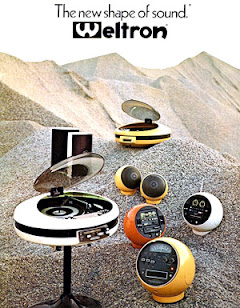



















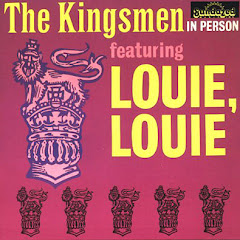












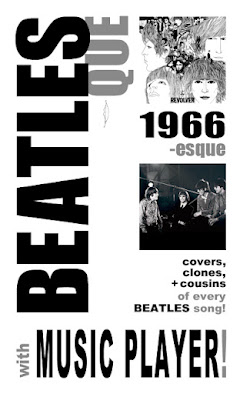
































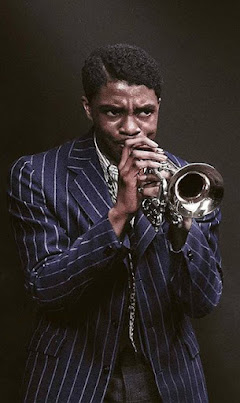







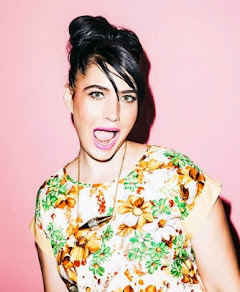







































No comments:
Post a Comment